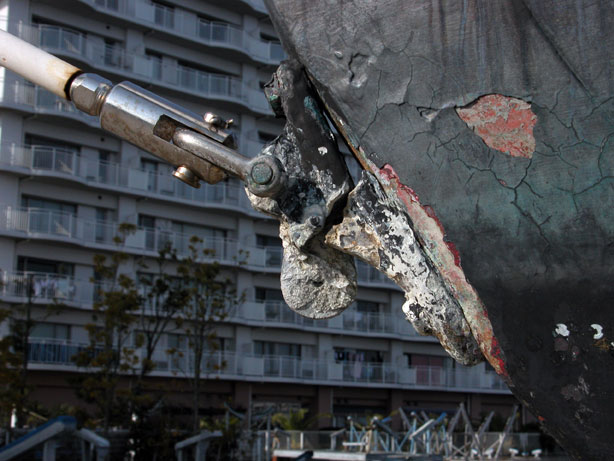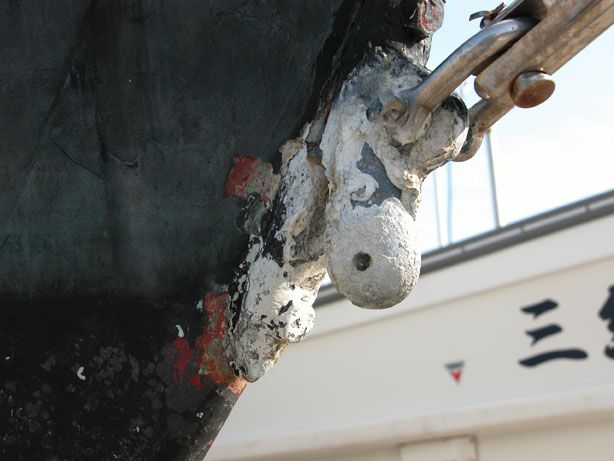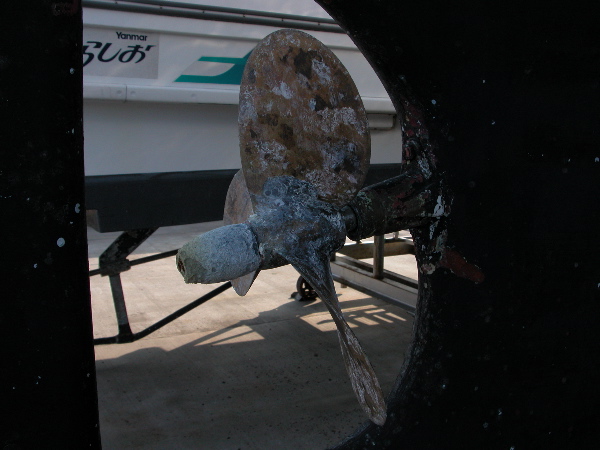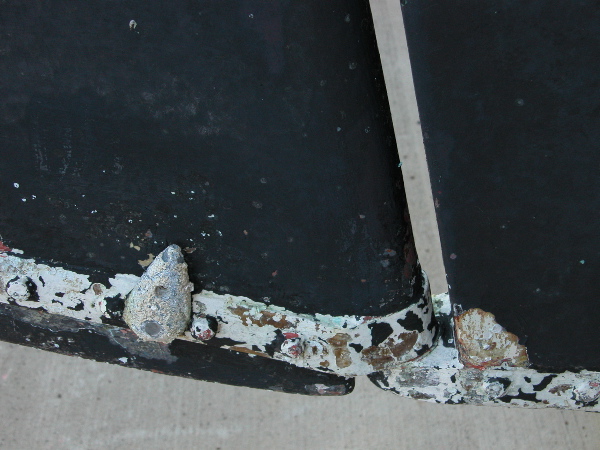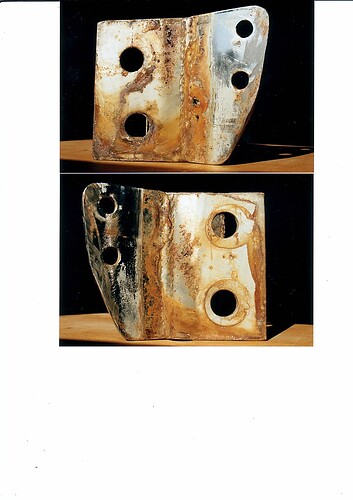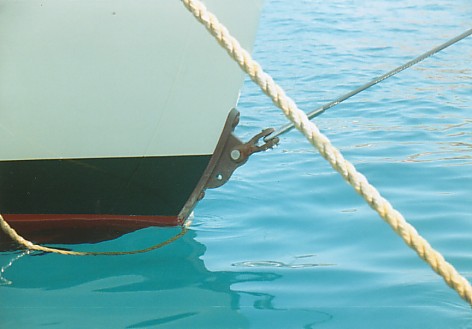I’m considering purchasing a BCC and got a first viewing today. Among the issues related to the condition of the 1980 vessel is a blown out bobstay fitting at the hull. Judging from the corrosion, the lower half of the fitting was immersed in water while the top half was not-- see attached images.
If I go ahead with a purchase I will need to replace the fitting. Any ideas where one can be found? Upon installation I would need to raise it a couple of inches to get it out of the water. Would this greatly impact the stability of the bowsprit.
I cannot say for sure whether the immersion was caused by cruising loads or poor positioning. I am purchasing the vessel to eventually cruise long term, so I am looking to solve the problem.
Additionally, I’d like to locate and purchase if necessary layout plans for a BCC. She’s a Canadian-built BCC, owner finished. As such, is customization extended to the boats vitals, or are there design elements such as tankage and engine placement that is standard on all BCCs across the board?
Thanks in advance for your help.
Warren Fraser
